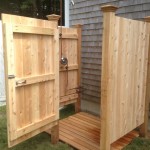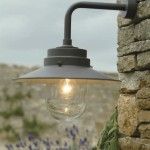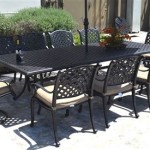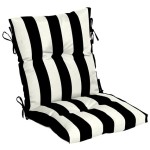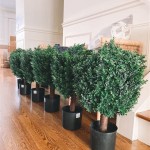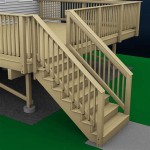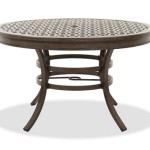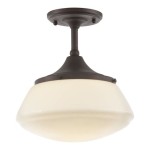Better Homes & Gardens Outdoor Planters: A Comprehensive Guide
Outdoor planters serve as vital elements in enhancing the aesthetic appeal and functionality of gardens, patios, and balconies. Better Homes & Gardens offers a diverse array of planters designed to complement various architectural styles and horticultural needs. This article provides a detailed overview of Better Homes & Gardens outdoor planters, exploring their materials, styles, applications, and considerations for selection.
Materials and Construction
The longevity and suitability of an outdoor planter significantly depend on the materials used in its construction. Better Homes & Gardens utilizes a variety of materials, each offering distinct advantages and disadvantages in terms of durability, aesthetics, and environmental impact.
Resin: Resin planters, often crafted from polyethylene or polypropylene, are a popular choice due to their lightweight nature and resistance to cracking, fading, and frost. They are typically more affordable than planters made from other materials and require minimal maintenance. Resin planters can be molded into a wide range of shapes and textures, mimicking the appearance of natural materials like terracotta or stone. However, some resin planters may lack the heft and perceived quality of heavier materials.
Terracotta: Terracotta planters, made from baked clay, offer a classic, earthy aesthetic. They are porous, allowing for good air circulation and drainage, which is beneficial for plant health. Terracotta is also a relatively inexpensive material. However, terracotta planters are susceptible to cracking in freezing temperatures and can dry out quickly in hot weather. They are also heavier than resin planters and can be breakable.
Metal: Metal planters, typically made from galvanized steel, aluminum, or copper, provide a modern and durable option. Galvanized steel planters are resistant to rust, while aluminum planters are lightweight and corrosion-resistant. Copper planters develop a beautiful patina over time, adding character and visual interest. Metal planters can retain heat, potentially harming plant roots in direct sunlight, so it is important to choose appropriate plants and placement. They can also be more expensive than resin or terracotta planters.
Concrete: Concrete planters are exceptionally durable and offer a substantial, architectural presence. They are resistant to cracking, fading, and frost, making them suitable for harsh climates. Concrete planters retain moisture well, which can be advantageous in dry environments. However, they are extremely heavy, making them difficult to move once filled with soil. They can also be more expensive than other types of planters.
Wood: Wooden planters, often constructed from cedar, redwood, or treated pine, offer a natural and warm aesthetic. Cedar and redwood are naturally resistant to decay and insects, while treated pine is more affordable but requires periodic maintenance to prevent rot. Wooden planters provide good insulation for plant roots, protecting them from extreme temperatures. However, wood can rot over time, especially if it is in direct contact with soil and moisture. Regular sealing or painting can help extend the lifespan of wooden planters.
Styles and Designs
Better Homes & Gardens offers a wide variety of planter styles to suit different design preferences and landscaping needs. These styles range from traditional to contemporary, and each is designed to complement various garden aesthetics.
Traditional Planters: Traditional planters often feature classic shapes, such as urns, bowls, and rectangular boxes. They are typically made from terracotta, resin (mimicking terracotta), or cast stone. Traditional planters are often adorned with decorative details, such as fluted sides, embossed patterns, or scrolled edges. They are well-suited for formal gardens, patios, and entryways.
Contemporary Planters: Contemporary planters embrace clean lines, minimalist designs, and modern materials. They are often made from metal, concrete, or resin with a smooth, matte finish. Contemporary planters may feature geometric shapes, such as cubes, cylinders, or angular boxes. They are ideal for modern homes, urban gardens, and minimalist landscapes.
Hanging Planters: Hanging planters provide a space-saving solution for small balconies, patios, or porches. They are typically made from lightweight materials, such as resin, metal, or woven fibers. Hanging planters can be suspended from hooks, brackets, or chains. They are ideal for displaying trailing plants, such as ivy, petunias, or herbs.
Self-Watering Planters: Self-watering planters feature a built-in reservoir that provides plants with a consistent supply of water. This helps to prevent overwatering and underwatering, making them ideal for busy gardeners or those who travel frequently. Self-watering planters are typically made from resin or plastic and can be used both indoors and outdoors.
Tiered Planters: Tiered planters consist of multiple levels or tiers, allowing for the display of a variety of plants in a compact space. They are ideal for creating vertical gardens, adding height and visual interest to patios or balconies. Tiered planters can be made from various materials, including wood, metal, or resin.
Practical Considerations for Selection and Use
Selecting the appropriate outdoor planter involves careful consideration of several factors, including plant type, size, drainage, and climate. Proper use and maintenance are also crucial for ensuring the longevity of both the planter and the plants it houses.
Plant Type and Size: The size of the planter should be proportionate to the mature size of the plant. Larger plants require larger planters to accommodate their root systems. Consider the specific needs of the plant, such as drainage requirements, sunlight exposure, and soil type, when selecting a planter. For example, plants that prefer well-drained soil, such as succulents, require planters with adequate drainage holes.
Drainage: Adequate drainage is essential for preventing root rot and promoting healthy plant growth. Ensure that the planter has drainage holes at the bottom to allow excess water to escape. If the planter does not have drainage holes, consider adding a layer of gravel or pebbles to the bottom to improve drainage. For planters placed on decks or patios, use a saucer or tray to catch excess water and prevent staining.
Climate: The climate in which the planter will be used is a significant factor to consider. In cold climates, choose planters made from materials that are resistant to cracking and frost, such as resin, concrete, or metal. In hot climates, choose planters that provide good insulation for plant roots, such as wood or ceramic. Consider the planter's color, as darker colors absorb more heat than lighter colors.
Placement: The placement of the planter can also affect its longevity and the health of the plants inside. Avoid placing planters in areas that are exposed to strong winds or extreme weather conditions. Position planters in areas that receive adequate sunlight for the specific plants being grown. Consider the weight of the planter when choosing a location, especially for heavy planters made from concrete or terracotta.
Maintenance: Regular maintenance is essential for keeping outdoor planters in good condition. Clean planters regularly to remove dirt and debris. Check drainage holes to ensure they are not clogged. Repot plants as needed to provide fresh soil and adequate space for growth. Protect planters from frost during the winter months by wrapping them in burlap or moving them indoors.
Soil Selection: The type of soil used in the planter should be appropriate for the specific plants being grown. Use a well-draining potting mix for most plants. For succulents and cacti, use a soil mix specifically formulated for these plants. Amend the soil with compost or other organic matter to improve its fertility and drainage.
Watering Practices: Water plants regularly, but avoid overwatering. Allow the soil to dry slightly between waterings. Check the soil moisture by inserting a finger into the soil. If the soil feels dry to the touch, it is time to water. Water deeply, until water drains out of the drainage holes. Water in the morning to allow the foliage to dry before nightfall, reducing the risk of fungal diseases.
Fertilization: Fertilize plants regularly to provide them with the nutrients they need to thrive. Use a balanced fertilizer that is specifically formulated for the type of plants being grown. Follow the instructions on the fertilizer label carefully to avoid overfertilizing.
By carefully considering these factors, homeowners can select and utilize Better Homes & Gardens outdoor planters to create beautiful and thriving outdoor spaces that enhance their homes and lifestyles.

Better Homes Gardens Resin Planter Review The Strategist

Better Homes Gardens 16 W X L 15 8 H Ellan White Resin Plant Pot Planter Walmart Com

Better Homes Gardens 16 W X L 15 8 H Ellan White Resin Plant Pot Planter Walmart Com

Better Homes Gardens Terrence 19 Wide Round Resin Planter Cement Color Walmart Com

Better Homes Gardens 16 W X L 15 8 H Ellan White Resin Plant Pot Planter Walmart Com

Diy Outdoor Planter From Better Homes And Gardens Rockin Mama

Better Homes Gardens Round Gray Galvanized Metal Planter Set Of 3 Multi Size Walmart Com

Better Homes Gardens Assorted Round Beige Resin And Rattan Plant Planter 2 Pieces With Drainage Hole Walmart Com

Better Homes And Gardens Camrose Farmhouse Outdoor Planter Multiple Sizes Walmart Com

Creative Ideas For Building Thriving Small Gardens Better Homes And Real Estate Life Garden

